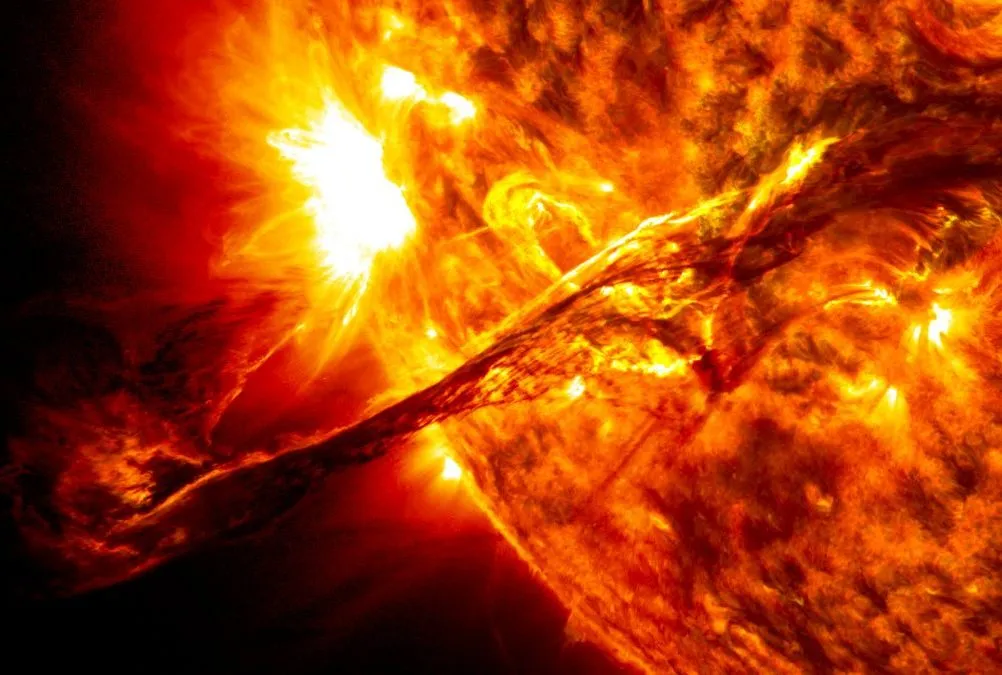The most powerful known outburst from the Sun hit Earth in 12,350 BC during the end of the last Ice Age, according to scientists.
It was an event known as a 'solar particle storm', during which charged particles from the Sun fire through space and smash into our planet.
More on solar storms

Solar particle storms are rare, but when they happen they bombard Earth with huge quantity of high-energy particles from the Sun.

Tracking ancient solar storms
Scientists are able to track the history of solar storms like this through radiocarbon dating and by analysing tree rings in ancient trees.
The team behind this latest finding say it expands the timeline and intensity of known solar activity, and resets the upper boundaries for solar particle storms.
The international team of scientists discovered an "extreme" spike in radiocarbon that they can track back to the year 12,350 BC, the dusk of the last Ice Age.
This space weather storm struck Earth 14,300 years ago and was identified by Kseniia Golubenko and Ilya Usoskin at the University of Oulu, Finland.

They used a chemistry–climate model called SOCOL:14C-Ex, designed to reconstruct solar particle storms under ancient glacial climate conditions.
It found the ancient solar event was 18% stronger than another well-known event in AD 775, which was previously the strongest solar storm recorded in tree-ring archives.
The model was verified by wood samples found in the French Alps, dating back 14,300 years.
"Compared to the largest event of the modern satellite era — the 2005 particle storm — the ancient 12350 BC event was over 500 times more intense, according to our estimates," says Dr. Golubenko.

The team says other large known solar particle storms occurred around 994 AD, 663 BC, 5259 BC and 7176 BC.
"The ancient event in 12,350 BC is the only known extreme solar particle event outside of the Holocene epoch, the past ~12,000 years of stable warm climate." says Golubenko.
"Our new model lifts the existing limitation to the Holocene and extends our ability to analyse radiocarbon data even for glacial climate conditions."
The research team included scientists from France and Switzerland, and was led by Professor Edouard Bard from CEREGE, France.

Key science takeaways
Solar particle storms enhance the production of cosmogenic isotopes like radiocarbon in the atmosphere by cosmic rays.
These spikes are preserved as ancient data in tree rings, and analysing them enables scientists to date such spikes accurately.
In this way, scientists can learn more about ancient solar activity, ancient Earth systems and space climate.
The spikes are known as Miyake events after the Japanese researcher who discovered them.
"Miyake events allow us to pin down exact calendar years in floating archaeological chronologies”, says Usoskin.
"This event establishes a new worst-case scenario," Golubenko notes.
"Understanding its scale is critical for evaluating the risks posed by future solar storms to modern infrastructure like satellites, power grids, and communication systems."
Read the full paper at www.sciencedirect.com/science/article/pii/S0012821X25001827
